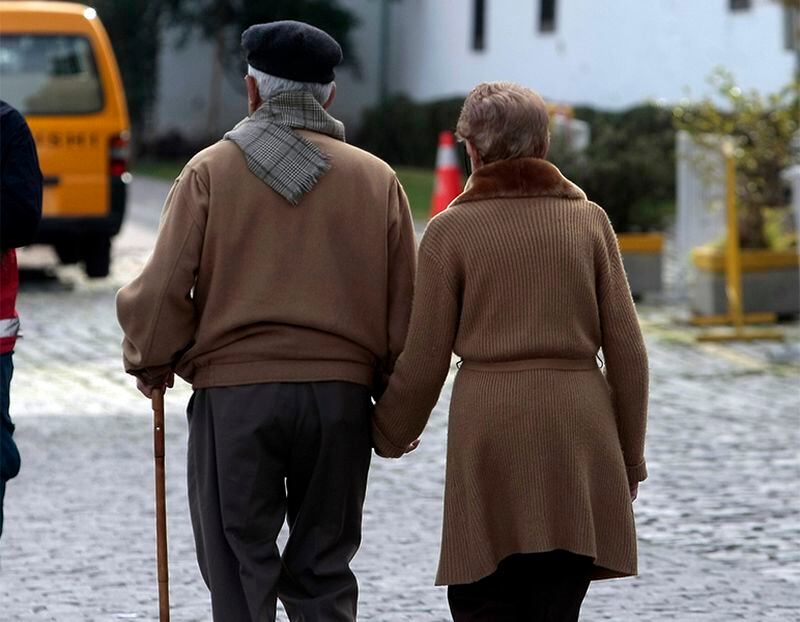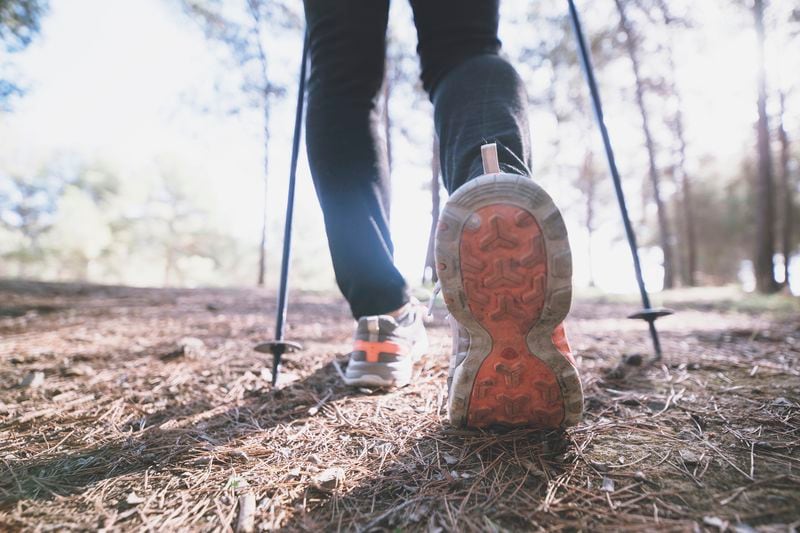The feeling of discomfort in the knees, back or ankles when the temperature drops is not exclusive to the elderly. A traumatologist and a kinesiologist explain why this happens, how it can affect our quality of life and how to take care of these ailments.
In rural, coastal or mountainous areas, far from the visual and auditory noise of the city, the behavior of animals and insects works as an excellent predictor of what the climate or the earth has in store for us in the near future. This is the case of the Queltehue, a bird present from Antofagasta to Chiloé, which with its strident cries announces the arrival of the rain.
In Santiago, between engines, horns and commotion, it will be difficult to hear them, and other specimens endowed with these faculties, such as bees, are becoming rare and are lost in the cement. However, there are people who believe they have some ability to predict a bad weather front. How do they know? Their joints are painful. But this gift, which many meteorologists already want, is more of a curse than a blessing for those who suffer from it, because it can be annoying. And it really has nothing to do with the weather forecast.
“It’s a myth,” says Agustín León, traumatologist at the Indisa Clinic, because the relationship between weather and joint ailments has not been scientifically proven. Yet there they are: every winter, every frosty day, knees, hips, spine and ankles thrust into consciousness with sharp pain, throbbing enough to ruin the day.
“There is no specific cause to determine why a person might have more pain in the winter, but it has been found to be linked to patients who have some degree of inflammation, wear or tear. osteoarthritis in certain joints,” explains León. According to the knee specialist, certain theories associate these conditions with variations in atmospheric pressure, variations which in turn generate changes in the tendons, muscles and other soft parts that cover the joints. “This can produce greater tension of these structures, increasing the pressure inside the joint.”
“Some authors think that when the atmospheric pressure drops, the synovial fluid expands, which would increase the pressure in the joints, generating pain,” adds Claudio Villagrán, director of the school of kinesiology at Finis Terrae University.
the dreaded old man
As you age, you are more likely to develop osteoarthritis as well, a set of joint problems characterized by the deterioration and loss of cartilage in the joints, changes in subchondral tissue – the soft area of the bones and located under cartilage – and various compromises of other areas, such as the synovial membrane, essential for the lubrication, elasticity, support and function of areas such as the knees, ankles, elbows, hips and wrists.
According to the World Health Organization (WHO), the worldwide prevalence of osteoarthritis is 47%, with the female population being the most affected (63%). In fact, women have been shown to have a 2.6 times higher risk than men of developing what is also called osteoarthritis. Meanwhile, the joints that typically concentrate these conditions are the spine (39%), knees (37%), hands (15%) and hips (9%).
It is a disease that occurs frequently in the elderly and is the main cause of disability in this age group. It used to be called degenerative joint disease (DED), but evidence has shown that its onset isn’t just due to the wear and tear of aging.
Indeed, as established by the Ministry of Health (Minsal), the causes of osteoarthritis are as much linked to the passing of years as to exposure to various risk factors. On the one hand, genetic inheritance, obesity, reproductive variables or osteoporosis; and on the other hand, the type of work done with the body, the presence of joint trauma or the prolonged development of impact sports.
It is therefore not surprising that as soon as a young person develops some type of joint disease, he is accused of the popular phrase “you have the old man”. But is it so? Is it so rare that someone in their 40s, 30s, 20s or even younger has joint pain?
Agustín León says that there are young patients who have suffered a fracture in the joint of the arms or legs and who can also feel a sensation of pain in these areas when the ambient temperature is low. “It has to do with the difference in tissue between healthy bone and consolidated bone (as healed bone is called). This piece may have different mechanical characteristics from the rest and therefore react differently to atmospheric pressure, generating discomfort” .
Having suffered serious injuries is not the only possible cause of joint discomfort. The cold itself causes tension in muscles and tendons, loss of flexibility and slowing of movement. This stiffness can manifest itself as a feeling of pain or discomfort in the joints, especially those that constantly receive loads, such as the knees or the lower back.

No major risks, but…
Joint pain is not necessarily a symptom of an injury, but it is a sign of wear and tear in the area or perhaps an unwanted legacy that left behind previous damage. Although if it is something frequent, especially if it is older adults, it is advisable to consult a specialist.
“These are pains that have no other risk than the discomfort and discomfort they cause,” says Claudio Villagrán. The problem is that physical performance can be diminished and “these pains could lead to negative mechanical compensations and generate muscle imbalances or asymmetries, which would ultimately lead to some form of injury to the musculoskeletal system”.
Those who suffer from it know that these pains impact and affect daily activities. Opening or closing a door, climbing stairs, sitting down and getting up become painful moments. It can even deteriorate the quality of sleep, preventing people from getting restful rest and, therefore, as Villagrán explains, reducing the quality of life.
“It is common that in winter it happens that in English they call blue: a depressing winter melancholy. And when you are depressed, you become more sensitive to pain,” says Agustín León. This situation occurs, especially, when there is a reduction in daily activities, especially those that usually take place outdoors. If you stop taking your daily walk or your weekend walks, or even stop going to the supermarket because of the cold or fear of rain, you could see your morale drop. Too bad, we are usually animals.
To make matters worse, we usually fill that activity gap in our routes with food. The common kilos that are downloaded in the winter. The problem is that the more weight we gain, the more our joints will have to work, the more they will wear out and the more likely it is that, in cold weather, ailments will appear.
Some preventive measures
We’ve already said it: the less you move, the more you risk feeling discomfort in your joints. Therefore, going into hibernation during the winter is a mistake and an invitation to discomfort; On the contrary, it is essential to stay active.
“If you are a patient used to taking long walks every day, or someone who likes to play sports and exercise every week, the ideal is to try to keep moving. If you stay flexible , with healthy muscles, the possibility of having pain decreases”, advises León.
According to Claudio Villagrán, joint diseases can be avoided through controlled and progressive physical activity. For this, he recommends “activating the body slowly”. How? Let’s proceed step by step:
- Walking for 10 minutes at light to moderate intensities, with the feeling that the activity is “easy and not strenuous”.
- Stretch large muscle groups. What is that? The hamstrings (those behind the thigh), quadriceps (above the knees), legs, arms and also the spine move in all directions but without causing pain.
Did you expect more steps? Well, that shows you how simple it can be. The important thing, says the kinesiologist, is to do 30 minutes of controlled physical activity. With this, you can prevent these joint pains.
Of course, there are certain aspects that must be taken care of during the activity, especially those that exceed the 50-year barrier. For example, jogging with shoes suitable for the surface. Agustín León says that the ideal is to avoid repetitive impacts, such as the rebound generated during a descent into the Trek or go down the stairs.

Staying hydrated, even if in winter you don’t feel like drinking water or cold liquids, is also part of our responsibilities. León says hot drinks like tea or herbs work just as well as cold ones. This is relevant, because in this way we allow the cartilage to take charge of “maintaining the hydration of the joint and thus avoiding inflammation and pain”.
On the other hand, specialists recommend keeping warm, but doing it in layers and not just because of a great jacket that you want to wear. Doing so allows you to play with the variations in body temperature that occur throughout the day, according to the traumatologist. For his part, Claudio Villagrán advises the use of gloves to those who suffer from joint pain in the hands and wrists.
Villagrán points out that if you feel pain in your joints, it would be a mistake to self-medicate. “If necessary, a doctor should be consulted.” It is also not essential to rest, unless it has been indicated by “their initial or basal state, of an osteoarticular pathology”.
Read more about cold in Practical
Source: Latercera
I’m Todderic Kirkman, a journalist and author for athletistic. I specialize in covering all news related to sports, ranging from basketball to football and everything in between. With over 10 years of experience in the industry, I have become an invaluable asset to my team. My ambition is to bring the most up-to-date information on sports topics around the world.


